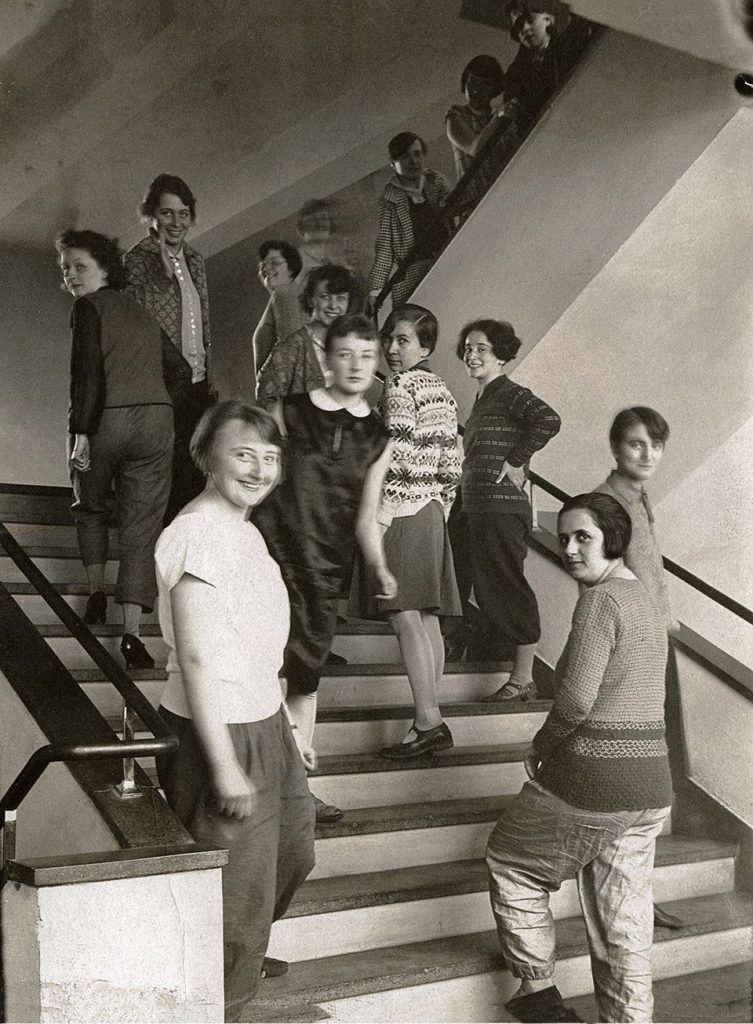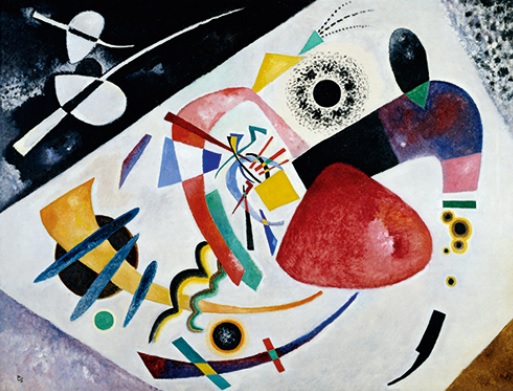One can always be amazed by the vision or intuition of some people and the lack of common sense of others.
In 1933, the young Alfred Barr, co-founder and director of MoMA, bought without blinking, Oskar Schlemmer’s painting “The Bauhaus Staircase” for his museum. It was painted at the end of 1932 at the time when the German government was planning to close the most international and avant-garde institution of the twentieth century.
For his part, Schlemmer, who worked at the Bauhaus between 1920 and 1929 and was in charge, above all, of leading the sculpture workshop and later on the Performance Theater, lamented that he could not achieve his best painting style for his cutting-edge ideas. In spite of this, and as a protest to the anti-cultural measures that persecuted artists and quality pedagogues in Germany at the time, he reacts not with pamphlets but instead with the high level of his pictorial creation with his famous painting, The Bauhaus Staircase (here corresponds to put a picture of the picture).
To explain briefly what the famous Bauhaus School of Design, that existed between the years of 1919 and 1933, meant in its time, it must be remembered that shortly before being founded, a great fierce war had just ended, making it clear that a new social structure with greater democratic decision-making and new educational standards was necessary.

Among other things, the integration of women was favored, giving them the right to vote. Precisely who gave that right to women among many others were events linked to the Weimar Republic in 1918.
The city of Weimar was then a suitable place to try a new pedagogical idea that would push society based on art towards a more balanced, harmonious, and creative future. It was then, a hundred years ago, that the state school “Bauhaus” was founded under the visionary direction of the architect Walter Gropius.
The quality of Gropius as director is shown in the nucleus of teachers that made up his team. In addition to Schlemmer, Lyonel Feininger, Johannes Itten, Vassily Kandinsky, Paul Klee, Lázló Moholy-Nagy, Gunta Stölzl, Josef and Anni Albers, stood out among others.
As an architect, Gropius favored the rigorous, clear, and ordered forms of decorative line and saw in them the principle of a higher order training beyond artistic training. It was this same general concept of basic construction that he applied to the school, creating an interdisciplinary character for the freedom of action of the creative spirit.
In the Bauhaus, the artist had to train and then given freedom, helped by the precision of an experienced technical assistant, with which the artist-teacher on the one hand and the craftsman-assistant on the other constituted a narrow pedagogical unit as the teacher will be the one taught.

Architects, sculptors, photographers, choreographers, upholsterers and painters formed a team. The artistic approach was also applied to the everyday, generating aesthetic forms for daily use, taking up the idea of William Morris, whom, in conjunction with John Ruskin founded the Arts and Craft movement of the nineteenth century.
The integration and high number of women as well as foreigners and natives was an unprecedented achievement.
In 1925, 6 years after its foundation, obscure politicians won a first victory against the revolutionary artistic movement of the Bauhaus by shortening subsidies in such a way that the survival of the institution is maintained only with an eviction and a new beginning in the equally provincial and small town of Dessau.
The first years there are promising and full of energy, assisted by a building created especially in 1925 by Gropius for the proposed objectives (Schlemmer’s “Bauhaus stairway” is inspired precisely by that building).
The Bauhaus gains in national and international importance, the teachers and also the students get a greater general recognition. The designs and products of those glorious times of the Bauhaus stand out even today for their modernity, which well gives an idea of how revolutionary it was in its time.

As usual, ideas and situations change and groups vary. After harsh discussions about the planning to follow and a change in the directory, Ludwig Mies van der Rohe takes charge in the 30s to try to save the now called Bauhaus Higher School, but the political situation is progressively growing more unfavorable and soon after, the State subsidies are again drastically cut back forcing the institution to a final eviction to Berlin in 1933, where just a few months later Hitler’s government closes the institution scattering the majority of the artists who made it up around the world.
With just a hint of imagination one could assume that without developments just narrated, for example the Seagram Building (New York, 1958) by the architect Mies van der Rohe, nor the PanAm Building (Manhattan, 1959) by Walter Gropius would never have been built , neither the New Bauhaus and then the School of Design of László Moholy-Nagy in Chicago would have been founded either, nor the art of Robert Rauschenberg, Donald Judd or Richard Serra would have been what they have been without the pedagogical work of their teacher Josef Albers at the Black Mountain College in North Carolina.

Seen with the appropriate historical distance and returning to the beginning of this text, it is interesting to note that the intuition and entrepreneurial character of a young art historian such as Alfred Barr gives MoMA the privilege of having a painting that perfectly condenses the idea, place and modernity of the Bauhaus in its time, at the same time that it shows that the lack of common sense and the mediocrity of the powerful arrogant who create the greatest resistance to the development of creative ideas and movements, now and then, display in their resistance a sad and dark example of their intellectual poverty.
